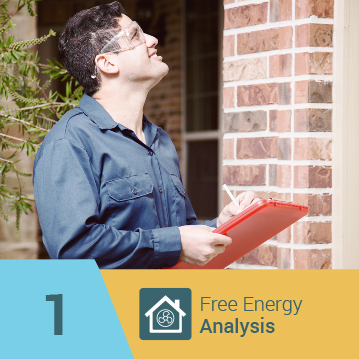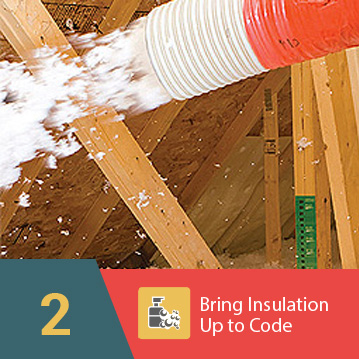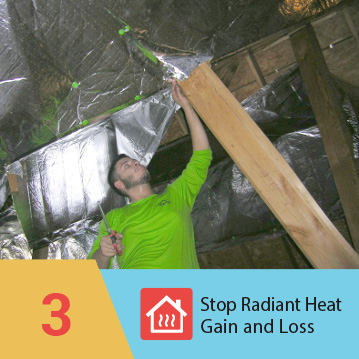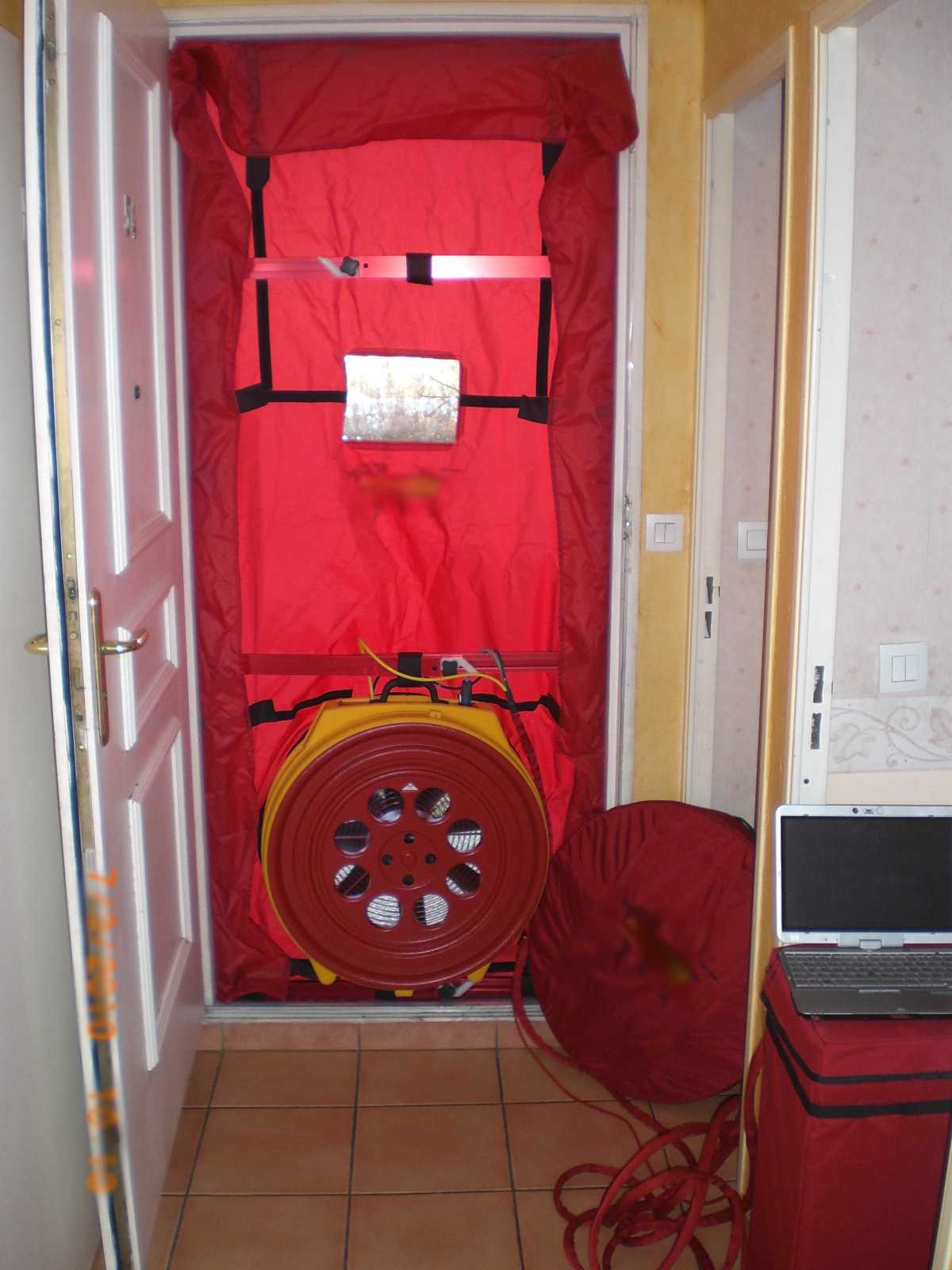Blower Door Testing
A blower door is a powerful fan that mounts into the frame of an exterior door. The fan pulls air out of the house, lowering the air pressure inside. The higher outside air pressure then flows in through all unsealed cracks and openings. The auditors may use a smoke pencil to detect air leaks. These tests determine the air infiltration rate of a building.
Blower doors consist of a frame and flexible panel that fit in a doorway, a variable-speed fan, a pressure gauge to measure the pressure differences inside and outside the home, and an airflow manometer and hoses for measuring airflow.
There are two types of blower doors: calibrated and uncalibrated. It is important that auditors use a calibrated door. This type of blower door has several gauges that measure the amount of air pulled out of the house by the fan. Uncalibrated blower doors can only locate leaks in homes. They provide no method for determining the overall tightness of a building. The calibrated blower door's data allow the auditor to quantify the amount of air leakage and the effectiveness of any air-sealing job.
PREPARING FOR A BLOWER DOOR TEST
Take the following steps to prepare your home for a blower door test:
- If you heat with wood, be sure all fires are completely out - not even coals - before the auditor arrives. Remove any ashes from open fireplaces.
- Plan to do a walk-through of your home with the auditor. Be prepared to point out areas that you know are drafty or difficult to condition comfortably.
- Expect the auditor to request access to all areas of your home including closets, built-in cabinets, attics, crawl spaces, and any unused rooms.
- The auditor will need to close all exterior doors and windows, open all interior doors, and close any fireplace dampers, doors, and woodstove air inlets.
Expect the auditor to set controls on all atmospheric fossil fuel appliances to ensure that they do not fire during the test. The auditor should return them to the original position after the test.
Expect the test to take up to an hour or more, depending on the complexity of your home.
What’s A Good Blower Door Test Number?
Here’s a rough scale to compare your blower door test number to other standards:
- 10-20 ACH50 – Older homes, like living in a “barn”
- 7-10 ACH50 – Average new home with some air sealing but no verification and little attention to detail
- 7 ACH50 – OK infiltration level and the 2009 IECC energy code requirement
- 3-5 ACH50 – Good and achievable target for most new homes. The ENERGY STAR reference home is 5 ACH50 for climate zone 4 which covers DC, MD, VA and part of PA. The majority of PA is 4 ACH50 for the ENERGY STAR reference home.
- 3 ACH50 and lower – Tight home with great air sealing, and required by the 2012 energy code adopted in MD and coming to other jurisdictions soon.
- .6 ACH50 – Super tight home and the Passive House standard.
Here at eShield, we are dedicated to helping you meet all of your energy efficiency needs. We also offer a free energy analysis to save you money and we also offer energy saving products to ensure the utmost comfort at the best price. Don’t hesitate to call 866-978-9170 to find out all that we have to offer, or go to our contact page.





